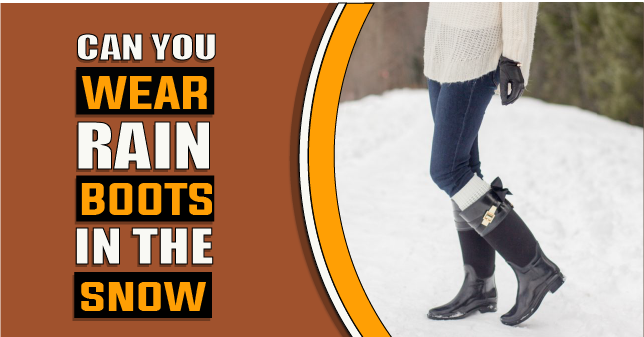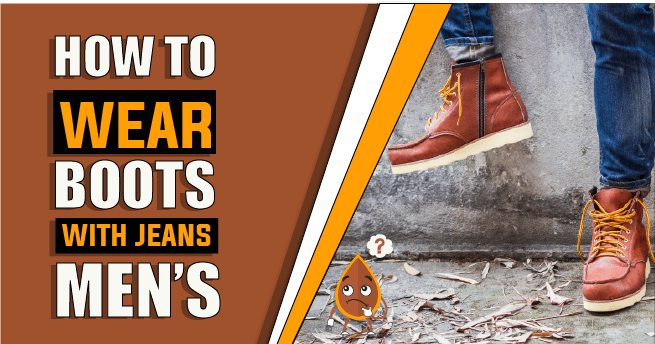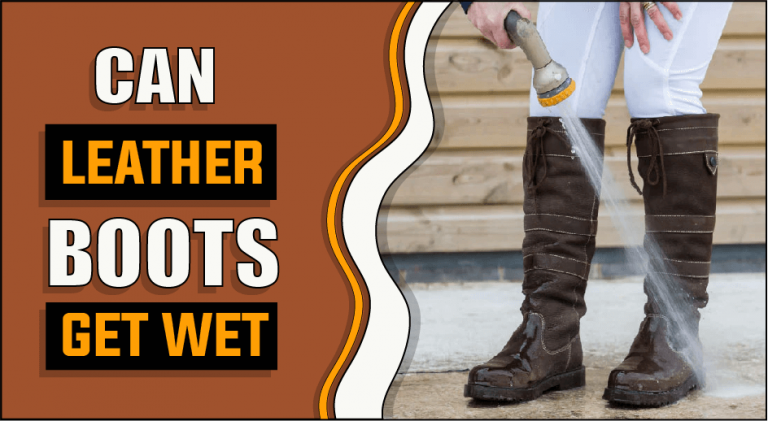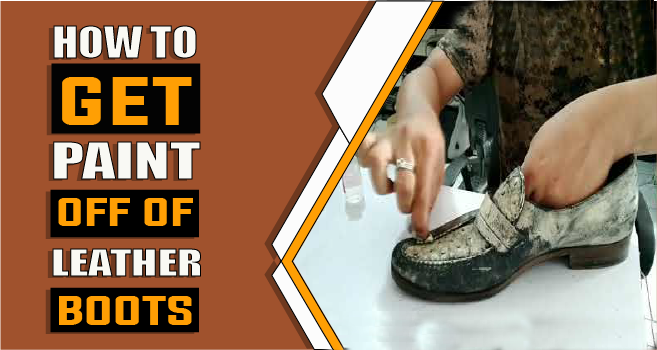Can You Wear Rain Boots in the Snow – The Truth Reveals
Do you own a set of rain boots? If not, then you might want to think about purchasing a pair! Rain boots are perfect for keeping your feet dry in the rain and keeping your feet warm in the cold weather. Although most people think of rain boots as a summertime accessory, did you know that you can also wear them in the snow? It may seem counterintuitive, but rain boots can also be an ideal choice for keeping your feet warm and dry during the winter. In this blog post, we’ll tell you all about can you wear rain boots in the snow and will also provide some tips for staying comfortable and looking stylish. Keep reading to learn more!

Let’s discuss can you wear rain boots in the snow?
If you reside in a region where there is frequent snowfall, you might be wondering whether it is appropriate to wear rain boots in the snow. The short answer is yes because Rain boots can be used in the snow. And can be a good way to keep your feet warm and dry when it’s cold and wet outside. They are therefore a good option for walking in the snow. Rain boots are made from waterproof materials that help to keep your feet dry and protected from the elements. They also provide great traction on slippery surfaces. Here are some pointers for using rain boots in snow:
1. Choose the right pair of boots:
When selecting a pair of rain boots for snowy weather, make sure to choose a style that is both waterproof and insulated. This will help ensure your feet stay dry and warm all day long.
2. Pair them with the right socks:
To further protect your feet from the cold, you should make sure to pair your rain boots with a thick pair of socks. Wool socks are a great option because they can keep your feet warm and dry by keeping the moisture away.
3. Add an extra layer of protection:
If you want to keep your feet warm and dry, consider adding an extra layer of protection with some boot liners. Boot liners are typically made from a waterproof and insulating material, which will help to trap heat and keep snow out.
4. Let your boots air out:
After wearing your rain boots in the snow, make sure to let them air out so they don’t get too wet on the inside. It’s crucial to take this extra step since wet boots won’t be able to perform their function of keeping you warm and can even make your feet cold and uncomfortable. So much that it can also become a health hazard.
5. Apply waterproofing spray:
To help extend the life of your rain boots, consider applying a waterproofing spray before each wear. This will help to repel water and keep your boots looking like new.
Wearing rain boots in the snow is not ideal, but it is possible. Just make sure to take the necessary precautions to keep your feet warm and dry. And, most importantly, don’t stay out in the cold for too long.
Different types of rain boots and their uses?
There are many various types of rain boots on the market, each with a specific purpose. Some rain boots are made to be used in a wide range of situations, while others are made for more specific tasks. Here is a look at some of the different types of rain boots and their uses:
1: General-purpose rain boots:
These boots are typically made from a rubber or PVC material and feature a simple design. They are ideal for everyday use in wet-weather conditions and can be worn with most types of clothing.
2. Hunting rain boots:
These boots are designed to provide traction and waterproof protection while you are out hunting in wet conditions. They typically have a rubber or neoprene outer shell and are lined with waterproof and breathable material. If you are going to be spending any time hunting in the rain, then these boots are a must-have.
3. Construction rain boots:
These boots are designed for people who work in construction or other outdoor occupations that involve wet conditions. They typically have a steel toe and a thick, durable sole to protect the feet from sharp objects and debris.
4. Agricultural rain boots:
Agricultural rain boots are designed for use in agricultural settings. They typically have higher ankle support and a more aggressive tread pattern to provide traction in muddy conditions. This type of rain boot is often made from a more durable material to withstand the tough conditions found on farms.
5. Industrial rain boots:
These boots are designed for workers in industrial settings who are exposed to harsh chemicals and other potentially dangerous materials. They typically have a steel toe and a slip-resistant sole to protect the wearer from injury. If you work in an industrial environment, it is important to choose a boot that is specifically designed for that purpose.
6. Military rain boots:
These boots are designed to provide soldiers with protection from the elements in wet and cold conditions. They are typically made of rubber or PVC and feature a waterproof, slip-resistant sole. If you are looking for a boot that can provide you with good traction in slippery conditions, a military rain boot may be a good option.
7. Tactical rain boots:
These boots were first made for the use of people in the military and the police force. They are often composed of durable, water-resistant materials and provide a significant amount of protection from the elements. If you are looking for a boot that can handle any type of terrain and weather conditions, then a tactical rain boot is a good choice.
8. Fashion rain boots:
These boots are designed more for the style than any practical function. As a result, they may not offer as much protection against the weather as other types of rain boots. However, they can be a great option if you’re looking for stylish rain boots to wear out on a rainy day.
9. Children’s rain boots:
These boots are designed specifically for children and usually come in fun, colorful designs. They are made to protect kids from the wet and muddy conditions often found in rain puddles and backyard play.
10. Pet rain boots:
Pet rain boots are a must-have for any pet owner. They help protect your pet’s feet from the wet and cold, and can also prevent muddy paw prints from tracking into your home. This type of rain boot is typically made from rubber or PVC and has a non-slip sole to help keep your pet safe.
So, depending on your needs, you will find that there is a rain boot out there that is perfect for you!
Why is wearing rain boots in the snow a smart idea?
Here are a few benefits of wearing rain boots in the snow:
1: They are waterproof:
This is the most common reason for buying a rain boot. If you are aware that your feet will get wet, you might as well be at ease while doing so. Buying a pair of rain boots seems like a perfect idea for keeping your feet dry in the snow and puddles.
2: They have good traction:
Another important factor to consider when buying a rain boot is traction. Since no one wants to slip on the ice or snow. A good pair of rain boots will have a lug sole that will provide good traction in slippery conditions.
3: They are warm:
If you reside in a cold region, you should be aware of the value of having warm boots. Most rain boots are made with insulation to keep your feet warm in the snow.
4: They are fashionable:
Over the past few years, rain boots have evolved greatly. They are currently available in a wide range of colors and designs. Such that you can easily find rain boots to match any outfit.
5: They are affordable:
Rain boots are an affordable option as winter footwear. You can find a good pair of rain boots for just under $100.
6: They are simple to clean:
If your rain boots become muddy or soiled, simply wipe them down with a moist cloth. They are more durable than conventional shoes, so you won’t have to worry about them getting soiled due to moisture as is the case with other regular shoes.
7: They come in a variety of sizes:
Rain boots are available in a range of sizes to fit both men and women. So, it is easy to find a pair that matches your needs.
8: They are versatile:
You can wear rain boots for a variety of occasions. They are perfect for walking in the rain or snow, but that’s not all, you can also wear them to festivals or other outdoor events.
There you have it, then! The advantages of wearing rain boots in the snow.
Why is it not a good idea to wear rain boots in the snow?
The following are some drawbacks to wearing rain boots in the snow:
1: Your boots can get ruined:
You run the risk of ruining your rain boots if you wear them in the snow. The snow and the cold can cause the rubber to crack and break down, making them useless. However, you can prevent this if you exercise enough caution.
2: They can be uncomfortable:
Wearing rain boots for an extended period can be uncomfortable. They can rub against your skin, and their waterproof construction can make your feet sweat. Hence, it is advised that you wear socks to avoid blisters.
3: They can be difficult to walk in:
Depending on the type of rain boots you have, you may feel different levels of difficulty walking in them. This is because they are frequently constructed of rubber, which is not a very flexible material. This can make it difficult to move your feet and ankles, and you may find yourself Stumbling more often than you would otherwise.
4: They can be heavy:
Rain boots can be quite heavy, which can make walking in them quite a bit of a challenge. It is even more so if you have to walk through deep snow.
5: They can be difficult to take off:
The bulkiness of rain boots can make them difficult to take off, especially if they’re wet and muddy. This can be a problem if you need to take them off quickly, such as in an emergency.
6: They can limit your mobility:
Rain boots can limit your mobility since they can make it hard to walk and run. This can be a problem if you need to get somewhere quickly or if you’re trying to escape from danger.
7: They can be dangerous:
If you’re not careful, wearing rain boots in the snow can be dangerous. You may slip and fall, or you may develop hypothermia if your feet become too cold. So, it’s important to be aware of the risks before you venture out into the snow in your rain boots.
Rain boot fashion tips for winter weather?
1: Choose the right rain boots.
When selecting the ideal rain boots for yourself, there are a few things that you should consider. Firstly, think about what kind of weather you’ll be wearing them in. If you live in an area with lots of snow, you’ll want a boot that’s tall and waterproof. However, if you reside in a milder area, a shorter and water-resistant boot would suffice.
2. Consider your style.
Rain boots come in all sorts of styles, from sleek and chic to fun and funky. Pick a pair that fits your style so that you’ll want to wear them whenever it rains.
3. Think about comfort.
When you’re picking out rain boots, make sure they’re comfortable as well as stylish. You don’t want to be stuck with a pair of boots that rubs your feet the wrong way or gives you blisters. To ensure a good fit and a pleasant wearing experience, try wearing them on before making an actual purchase.
4. Don’t forget about function.
Even though rain boots can be a fashion item, they still need to be functional. Make sure that the pair you chose can keep your feet dry in wet conditions. If you live in an area with a lot of snow, look for boots that are lined with fur or other insulation to keep your feet warm as well as dry.
5. Accessorize!
Once you have the perfect pair of rain boots, don’t forget to accessorize. You can remain dry and look elegant by carrying an adorable raincoat and umbrella. And if you want to make a fashion statement, consider adding some fun accessories to your rain boots, like patterned socks or colorful laces.
Accessories that can be worn with rain boots in the snow?
Assuming you would like a complete list of accessories that can be worn with your rain boots in the snow:
1: Scarf:
A scarf is an excellent choice for keeping your neck and face warm. If you don’t want the extra fabric around your neck, you could also opt for a cute beanie.
2: Gloves:
Gloves are another must-have accessory to keep your hands from getting cold and stiff. Go for waterproof and well-insulated ones so that your hand doesn’t get wet or frozen.
3: Coat or Jacket:
A coat or jacket is always a good idea to keep the rest of your body warm. You might as well go for a trench coat if you prefer something a little more fashionable. Making it an excellent option for being warm and dry while also appearing fashionable.
4: Socks
Lastly, make sure you have on a good pair of socks. You want them to be thick enough to keep your feet warm but not so thick that they make your rain boots too tight. Wool socks are always a great option.
So there you have it! A few accessories to help you stay warm and dry the next time you have to wear your rain boots in the snow.
How to take care of your rain boots during the winter months?
When the weather starts to turn cold and wet, it’s time to start thinking about how to take care of your rain boots. Here are a few tips to help you keep your boots in good condition during the winter months:
1: Store them in a cool, dry place:
One of the best ways to extend the life of your rain boots is to store them in a cool, dry place when you’re not using them. This will keep them from getting too dry and fracturing.
2. Use a boot liner:
Another great way to protect your rain boots is to use a boot liner. This will keep them clean and dry, as well as prevent moisture from penetrating the boot itself.
3. Apply a waterproofing spray:
Once every few months, you should apply a waterproofing spray to your rain boots. This will help keep them water-resistant and will also help repel any dirt or debris.
4. Clean them regularly:
It’s important to clean your rain boots regularly, especially if you live in an area that gets a lot of rain. Use only gentle soap and water for cleaning your boots; stay away from strong chemicals and vigorous washing as these might damage your boots.
5. Let them air dry:
After cleaning your rain boots, be sure to let them air dry completely before storing them away. If you do this, you won’t have to worry about mildew or mold growing in your boots.
Follow these guidelines to help extend the life of your rain boots and preserve the looks all winter long.
How do you keep your feet warm and dry when wearing rain boots in the snow?
There are a few things you can do to make sure your feet stay warm and dry when wearing rain boots in the snow.
1: Make sure your rain boots are the appropriate size. They ought to be snug but not too tight.
2: Wear socks made of a moisture-wicking substance, such as wool or synthetic fibers.
3: Consider wearing two pairs of socks if your feet tend to become cold easily.
4: To increase the warmth of your boots, try using insoles or liner inserts.
5: Make sure your pants are tucked into your boots to keep snow from getting in.
6: Wear gaiters if you’re going to walk in deep snow to keep snow from getting into your boots.
7: Take frequent breaks and move around so your feet don’t get too cold.
8: Avoid walking through puddles, or better yet walk around them if you can.
9: If your feet do get wet, change into dry socks and warm up as soon as possible.
10: When you’re done strolling in the snow, remove your boots and allow your feet to air out.
How are Snow Boots and Rain Boots Different?
Snow boots and rain boots are both certain types of shoes that are made to protect your feet from cold and wet weather. However, there are some key differences between these two types of boots that you should be aware of before making a purchase.
1: Snow boots are typically made from thicker, more durable materials than rain boots. This is because they need to be able to withstand the cold temperatures and heavy snowfall that they will be used in. Snow boots also often have insulation or fur lining to further protect your feet from the cold.
2: Rain boots are usually not as tall as snow boots. This is because they don’t need to provide as much coverage against the elements. Rain boots also tend to be less bulky and more stylish than snow boots.
3: Snow boots typically have a higher price tag than rain boots. This is because they are made from more expensive materials and often have additional features such as insulation or fur lining.
4: Rain boots are more versatile than snow boots. This is because they can be worn in a variety of different weather conditions, not just wet or cold weather. Furthermore, there are several ways in which rain boots can be styled to match any occasion.
5: Rain boots are typically made from rubber, while snow boots can be made from a variety of materials including rubber, leather, and fabric.
6: Snow boots often have traction on the bottom to help prevent you from slipping and falling on icy surfaces. Rain boots typically don’t have this feature.
Now that you know the main differences between snow boots and rain boots, you can choose the right type of boot for yourself. If you live in an area with cold winters, heavy snowfall, and low temperatures, then snow boots are a necessary purchase. However, if you live in a milder climate or only need boots for wet weather, then rain boots would be a more practical and affordable option.
3 Best Rain Boots to Wear in Snow?
Whether you are dealing with a little bit of slush or a full-blown blizzard, the right pair of rain boots can make all the difference in keeping your feet warm and dry. But with so many different styles and materials on the market, it can be tough to decide which pair is right for you.
Here are three of the best rain boots to wear in the snow, based on material, style, and function:
Hunter Women’s Original Short Gloss Rain Boots:
Specifications:
- Fabric Type: Rubber
- Sole Material:Rubber
- Origin: Imported
If you are looking for a boot that will keep your feet dry and comfortable in the snow, then Hunter’s Original Short Gloss Rain Boot is a perfect choice. To keep your feet dry, these boots have a waterproof rubber upper and a moisture-wicking interior. The boot also has a cushioned footbed for added comfort, and the outsole is designed for traction in slippery conditions.
Western Chief Printed Tall Waterproof Rain Boot:
Specifications:
- Origin: Imported
- Sole Material:Rubber
- Shaft Height:11 Inches
If you’re looking for a tall and stylish rain boot, the Western Chief Printed Tall Waterproof Rain Boot is a great option. They are constructed with 100% waterproof rubber and typically rock a cool printed design. They also have a comfortable EVA insole and an adjustable buckled strap for a perfect fit. This boot is available in women’s sizes 5-11.
Bogs Men’s Bozeman Tall Waterproof Snow Boot:
Specifications:
- Fabric Type: 100% – 60% Textile, 40% Rubber
- Sole Material:Ethylene Vinyl Acetate
- Origin: Imported
These Bogs boots are made to keep your feet dry and warm even in the most extreme weather. The Bozeman Tall boots are made with a waterproof neoprene upper and a 7mm Neo-Tech insulation that will keep your feet toasty. The boot also has a contoured EVA footbed for comfort, and the outsole is designed for traction in slippery conditions.
Related Questions:
Boot inserts are a type of insole that is designed to provide additional support and cushioning for the feet. They frequently serve as a pain reliever for illnesses like Plantar Fasciitis and other types of heel discomfort. Boot inserts can also be used to improve the fit of ill-fitting shoes or boots, and to help prevent blisters and other types of foot discomfort.
When selecting boot inserts, it is crucial to consider both the style of boot you own and the size and form of your feet. If you have a high-arched foot, for example, you’ll need a different insert than someone with a flat foot. It’s also important to choose an insert that is compatible with your boot’s liner. Otherwise, you risk harming your boots or failing to reap the full advantage of the inserts.
Boot inserts are typically placed inside the shoe or boot, directly underneath the insole. In rare situations, they may also be placed on top of the insole. It is important to follow the instructions that come with your particular product to ensure proper placement and maximum benefit.
Yes, they are! Hunter rain boots are made of a waterproof rubber material that will keep your feet dry and warm in the snow. Additionally, the inside of the boots is made of thick fleece to keep you warmer.
It depends on the type of snow. If you’re dealing with light, powdery snow, rubber boots are probably fine. However, if you’re dealing with heavy, wet snow, you’ll want to choose a boot that’s better suited for the conditions. Some good options include waterproof hiking boots or insulated winter boots.
While rain boots are not specifically designed for icy conditions, they can provide some traction and stability on slippery surfaces. If you’re planning on wearing rain boots in icy weather, it’s a good idea to choose a pair with a thick rubber sole and tread pattern. You may also want to consider investing in some ice grips or spikes to attach to your boots for extra traction.
Conclusion paragraph:
In conclusion of can you wear rain boots in the snow, the answer is yes you can. However, it depends on the type of snow. Light powdery snow is no problem for rain boots, but if you’re dealing with heavy wet snow, you’ll want to choose a boot that’s better suited for the conditions. Some good options include waterproof hiking boots or insulated winter boots. Additionally, it’s always a good idea to have ice grips or spikes on hand to attach to your boots for extra traction in icy weather.
Ella John created BootsSolution.com with the vision of helping people to find the perfect boots for any occasion. As an expert in the field of footwear, she has created a comprehensive guide to finding the perfect boots. With her BA (Hons) in Footwear Design from De Montfort University, UK, Ella John has been writing about boots for several years. On BootsSolution.com you can find helpful information about the latest trends, tips for taking care of your boots, and advice on how to choose the right pair. Ella’s mission is to provide her readers with the best possible advice and help make sure that everyone can look their best in a perfect pair of boots. So if you’re looking for the information and inspiration you need to find the perfect boots, look no further than BootsSolution.com.









